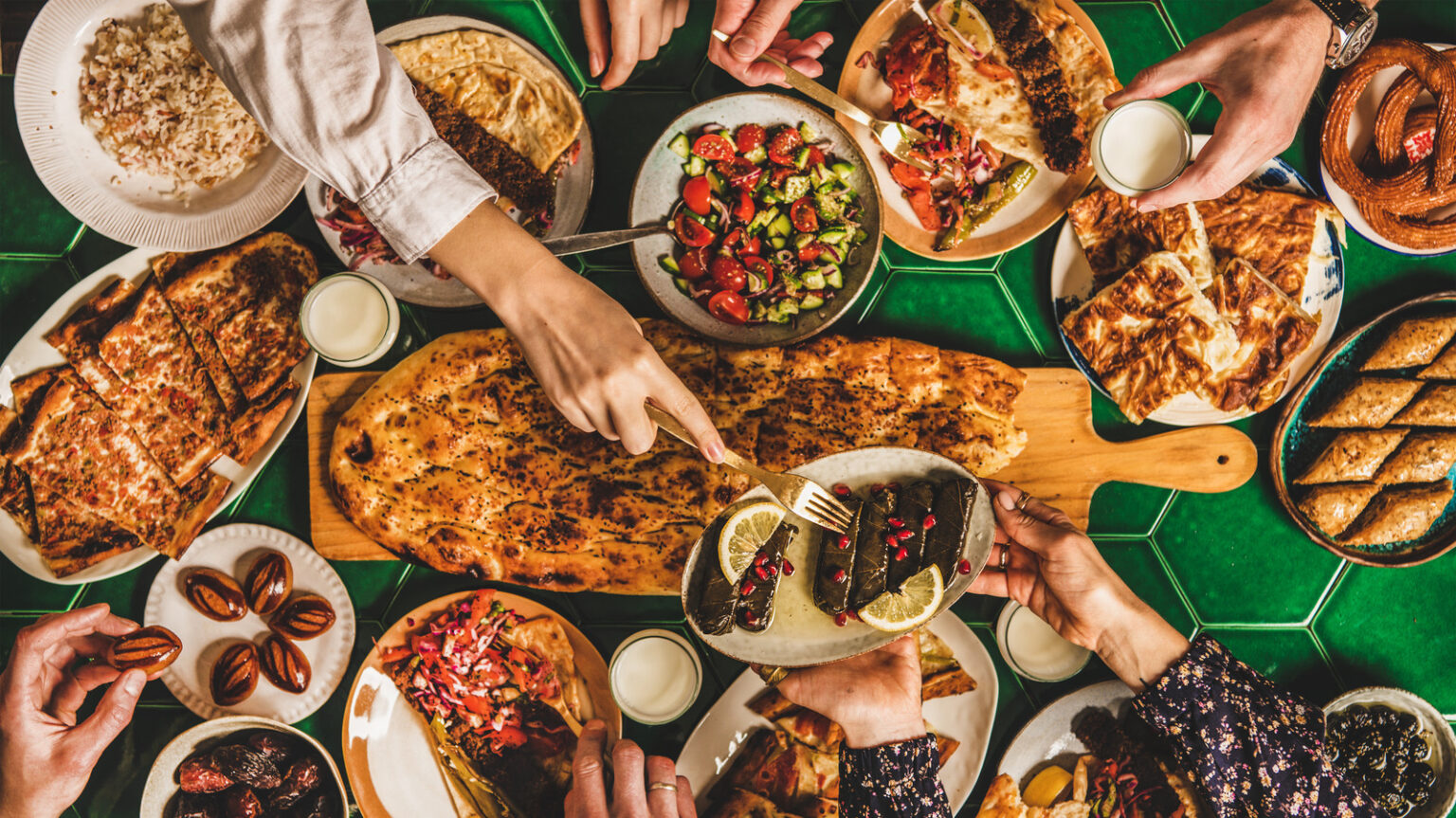Traditional Iftar Delicacies: A Taste of Heritage
1. Dates: The Perfect Start
Dates hold immense significance in Ramadan, as Prophet Muhammad (PBUH) is said to have broken his fast with dates and water. Packed with essential nutrients and natural sugars, dates provide an instant energy boost after hours of fasting. Most Muslim families begin their iftar with dates, followed by a glass of water or a cup of milk to rehydrate the body.
2. Soup: A Comforting First Course
Soups are a staple in many cultures as the first course of iftar. These comforting bowls of warmth help to rehydrate the body and prepare the stomach for heavier meals. In the Middle East, lentil soup is a popular choice, known for its rich flavors and nutritional value. In other regions, tomato soup or chicken soup is commonly served, each recipe offering unique local spices and ingredients.
3. Samosas: A Crunchy Delight
Samosas are one of the most popular snacks during Ramadan across many countries. These deep-fried pastry pockets are typically filled with spiced potatoes, minced meat, or lentils, offering a crispy and savory treat that pairs perfectly with a cup of tea. The golden-brown exterior gives way to a flavorful filling that delights the taste buds, making samosas a beloved iftar snack.
4. Stuffed Grape Leaves (Dolma)
Dolma, or stuffed grape leaves, are a delicious iftar dish originating from the Middle East. The leaves are filled with a mixture of rice, herbs, and sometimes ground meat, then wrapped and cooked to perfection. The combination of tangy grape leaves and savory fillings makes this dish an iconic iftar delight.
5. Fried Chicken or Kebabs
Fried chicken, along with kebabs, is a favorite savory dish in many cultures. Whether marinated with yogurt and spices or seasoned with local herbs, these dishes provide a satisfying, protein-packed meal after a long day of fasting. Grilled skewers of tender chicken or lamb are often served with flatbread, salad, and dips like hummus or tahini.
Modern Iftar Delicacies: A Fusion of Flavors
1. Smoothie Bowls and Fresh Juices
In recent years, smoothie bowls and fresh fruit juices have become popular additions to the iftar spread. These nutritious treats are often packed with fresh fruits, yogurt, seeds, and nuts, offering a refreshing way to replenish the body. Popular choices include smoothies made from mango, strawberry, or coconut, often topped with crunchy granola and chia seeds.
Fresh juices made from oranges, pomegranates, or berries are also highly sought after to quench thirst, providing a burst of vitamins and minerals to help the body recover from dehydration.
2. Grilled Veggie Platters
While traditional meat-based dishes still dominate the iftar table, grilled vegetables have gained popularity in recent years, catering to those who prefer lighter, plant-based options. Zucchini, bell peppers, eggplants, and mushrooms are commonly grilled and served with a drizzle of olive oil and a sprinkle of herbs. Grilled veggie platters often feature dips like hummus or baba ghanoush, making them a perfect balance of flavors.
3. Fusion Desserts: A Modern Twist
Desserts are a highlight of any iftar meal, and many new and exciting fusion desserts have emerged in recent years. While traditional sweets like baklava, kunafa, and qatayef remain loved favorites, modern adaptations with unique flavor combinations have been introduced. For example, ice cream versions of traditional desserts, or the use of matcha, rose water, and pistachios in modern pastries, offer a new twist on familiar flavors.
4. Healthy Salads and Bowls
In line with the growing focus on health and wellness, many people now enjoy nutrient-packed salads as part of their iftar meal. These salads are often filled with fresh greens, colorful vegetables, nuts, seeds, and even quinoa or couscous. A popular salad choice includes a combination of cherry tomatoes, cucumbers, feta cheese, olives, and a tangy lemon vinaigrette dressing. These light yet filling dishes provide essential vitamins and fiber to the body after fasting.
5. Vegan and Vegetarian Dishes
With more people adopting plant-based diets, vegan and vegetarian dishes have become a key feature in modern iftar menus. Lentil stew, chickpea curries, falafel, and vegan stuffed pitas have gained traction. These options not only cater to those following plant-based diets but also offer a refreshing, lighter alternative to traditional meat-heavy iftar dishes.
Drinks: A Crucial Part of Iftar
One of the most essential elements of iftar is the drink. After a long day of fasting, hydrating the body is a priority. In traditional iftar meals, drinks like rose water lemonade, yogurt-based drinks (such as ayran), or traditional Arabic coffee are often served. The sweetness of rose water lemonade complements the savory dishes, while yogurt drinks help soothe the stomach. Fresh fruit juices are also a common choice, adding a burst of flavor to the meal.
Modern takes on iftar drinks have seen the rise of nutrient-rich options like smoothies and detox water infused with fruits like lemon, cucumber, and mint. These help restore balance to the body’s electrolytes and provide hydration in a fun and flavorful way.
Conclusion
Whether you prefer the comforting taste of traditional delicacies or the innovative appeal of modern twists, the iftar meal is a beautiful opportunity to indulge in a wide range of flavors. As Ramadan continues, the iftar table evolves, reflecting the diverse cultures and culinary creativity of the Muslim world. From ancient recipes to contemporary trends, there’s something for everyone to enjoy, ensuring that the spirit of togetherness and celebration remains at the heart of the meal. Whichever iftar delicacies you choose, they are sure to bring joy, nourishment, and connection to your Ramadan experience.
Do follow gulf magazine on Instagram
for more information click here



